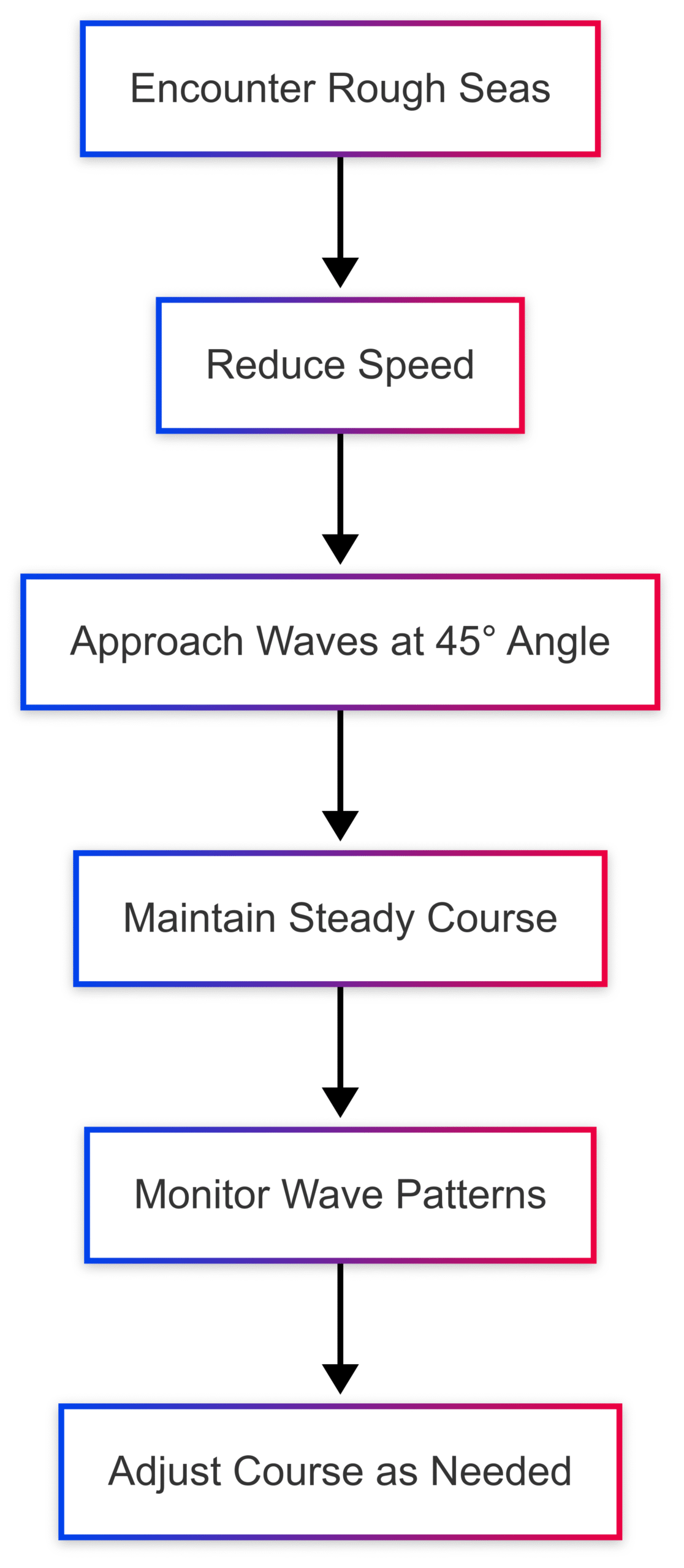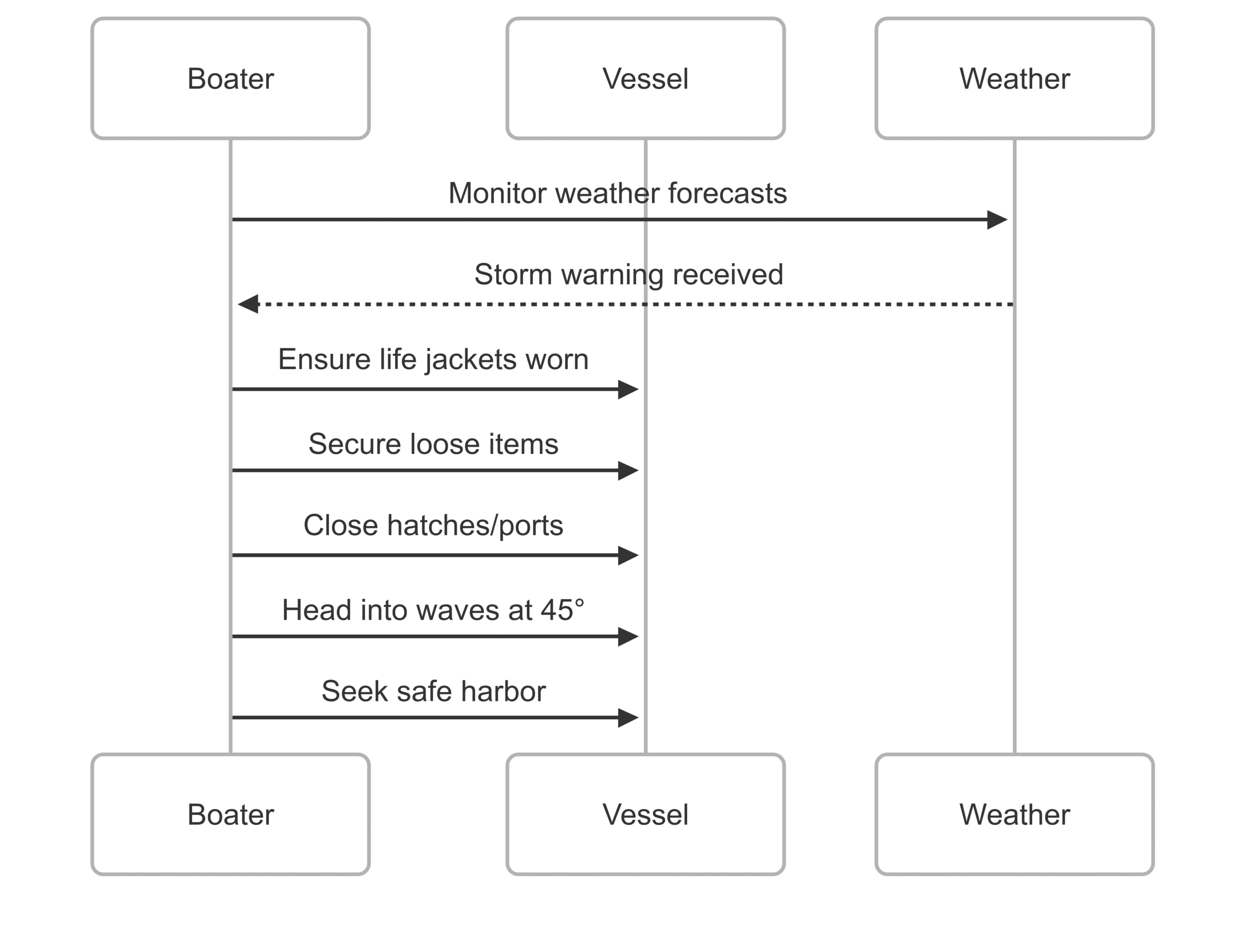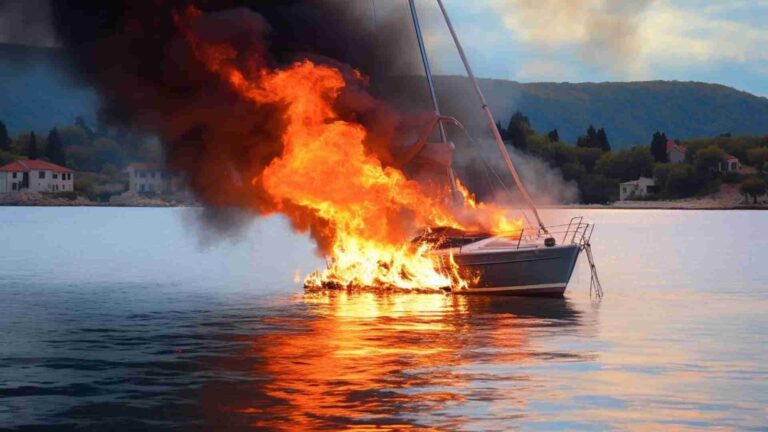Marine Safety Tips During Rough Sea Conditions
Learn essential marine safety tips for navigating rough seas, including weather monitoring, boat preparation, and emergency procedures to ensure a safe boating experience.
Boating offers unparalleled freedom and adventure, but rough sea conditions can transform a leisurely outing into a high-stakes challenge. High winds, towering waves, and sudden storms demand preparation, vigilance, and skill to ensure the safety of everyone on board. This comprehensive guide provides actionable strategies for amateur fishermen, recreational boaters, and maritime enthusiasts to navigate turbulent waters safely. From understanding weather patterns to equipping your vessel and executing proper navigation techniques, these tips will empower you to handle rough seas with confidence.
Understanding Rough Sea Conditions
Rough seas are characterized by high waves, strong winds, and unpredictable weather patterns. Recognizing the signs of deteriorating conditions is critical for making informed decisions before and during your voyage. Below are key indicators to monitor:
Swells and Wave Patterns
Large, steep, or irregular waves signal rough seas. Rapid changes in wave height or direction often indicate worsening conditions. Familiarize yourself with typical wave patterns in your boating region to detect anomalies. For example, short, choppy waves suggest strong winds, while long, rolling swells may be more manageable but still require caution.
Wind Speed and Direction
Wind is a primary driver of rough seas, generating larger waves as speed increases. Use reliable weather forecasting services or an onboard anemometer to monitor wind conditions. Sudden shifts in wind direction can exacerbate sea turbulence, so regular updates are essential.
Cloud Formations
Clouds provide visual cues about approaching weather. Dark, towering cumulonimbus clouds often precede storms, while low, thick cloud cover may indicate strong winds or rain. Keep an eye on the sky to anticipate changes before they impact your voyage.
Barometric Pressure
A falling barometer signals deteriorating weather, often accompanied by rough seas. Equip your vessel with a barometer and monitor it regularly. A rapid drop in pressure suggests an approaching low-pressure system, which typically brings stormy conditions.
| Indicator | Sign of Rough Seas | Action |
|---|---|---|
| Swells/Wave Patterns | Large, steep, or irregular waves | Reduce speed, adjust course to 45° angle |
| Wind Speed/Direction | High winds, sudden shifts | Monitor forecasts, secure loose items |
| Cloud Formations | Dark cumulonimbus or thick, low clouds | Prepare for storms, seek shelter if possible |
| Barometric Pressure | Rapidly falling pressure | Anticipate rough seas, activate emergency plan |
Pre-Trip Preparation for Rough Seas
Preparation is the cornerstone of safe boating in rough conditions. By planning ahead and equipping your vessel properly, you can mitigate risks and ensure a safer journey.
Check Weather Forecasts
Before setting sail, consult multiple reliable weather sources, such as the National Oceanic and Atmospheric Administration (NOAA) or Environment Canada. Pay attention to storm warnings, small craft advisories, and gale warnings. Apps like Windy or NOAA Weather Radar provide real-time updates, helping you make informed decisions about whether to proceed or postpone.
Create a Float Plan
A float plan is a critical safety measure. Share your trip details—planned route, expected return time, and passenger list—with a trusted contact onshore. In an emergency, this information can guide rescue efforts. Include alternative routes and safe harbors in your plan to account for unexpected weather changes.
Equip Your Vessel
Ensure your boat is equipped with essential safety gear:
- Life Jackets: Provide properly fitted, U.S. Coast Guard-approved life jackets for all passengers.
- Emergency Beacons: Carry an Emergency Position-Indicating Radio Beacon (EPIRB) or Personal Locator Beacon (PLB) for distress signaling.
- Flares: Stock visual distress signals, such as flares, for emergency communication.
- First-Aid Kit: Include a comprehensive kit to handle injuries.
- Fire Extinguishers: Ensure they are in working order and easily accessible.
- Bilge Pumps: Maintain functional bilge pumps to keep the vessel free of water.
Secure Loose Items
Unsecured items can become hazardous in rough seas. Stow gear in storage compartments, use straps or fasteners to secure heavy equipment, and ensure personal belongings are safely stored to prevent injury or damage.
Conduct Emergency Drills
Prepare your crew for emergencies by conducting drills for scenarios like man overboard, fire, or hull breaches. Assign roles and responsibilities to ensure a coordinated response. Familiarize everyone with the location and operation of safety equipment.
On-Water Strategies for Rough Seas
When rough seas arise, proper navigation techniques and situational awareness are vital for maintaining control and ensuring safety.
Adjust Speed and Course
Reduce speed to maintain stability and minimize wave impact. High speeds increase the risk of capsizing or losing control. Approach waves at a 45-degree angle to reduce the risk of broaching (when waves hit the boat broadside) or pitchpoling (when the bow buries into a wave). This angle ensures a smoother ride and better stability.

Maintain Steady Control
Avoid sudden maneuvers, which can destabilize the vessel. Keep both hands on the wheel and make smooth, gradual adjustments to maintain a steady course. This approach reduces the risk of capsizing and enhances control.
Balance the Load
Distribute weight evenly to prevent excessive rolling or pitching. In smaller vessels, instruct passengers to stay low and centered. If your boat has trim tabs or ballast systems, adjust them to optimize stability.
Trim the Boat
Proper trimming enhances stability by adjusting the boat’s angle relative to the water. Use trim tabs or adjust the outboard motor to keep the bow slightly up, allowing the boat to cut through waves more effectively. Experiment with settings to find the optimal configuration for your vessel.
Use Navigation Lights
In low-visibility conditions, such as heavy rain or fog, turn on navigation lights to increase visibility to other vessels. This is particularly important during stormy weather, even if it’s not fully dark.
Essential Marine Equipment
High-quality marine equipment enhances safety and navigation in rough seas. Below are key recommendations, including specifications and approximate costs.
Radio Communication Equipment
- Marine VHF Radio: Essential for short-range communication with other vessels and shore stations. Look for models with Digital Selective Calling (DSC) for distress signaling.
- Example: Standard Horizon GX1400 ($150–$200)
- Specs: 25W output, IPX7 waterproof, DSC capability
- EPIRB: Activates automatically in water to transmit your location to rescue services.
- Example: ACR GlobalFix V4 ($400–$600)
- Specs: 406 MHz signal, 48-hour battery life
- AIS Transponder: Shares vessel information (position, speed, course) with nearby boats and stations.
- Example: Raymarine AIS700 ($900–$1,200)
- Specs: Class B AIS, 2W output, integrated GPS
Nautical Navigation Equipment
- GPS Chartplotter: Provides real-time positioning and route planning.
- Example: Garmin GPSMAP 943xsv ($1,300–$1,500)
- Specs: 9-inch display, sonar compatibility, preloaded charts
- Marine Radar: Detects objects and hazards in low visibility.
- Example: Furuno DRS4W ($1,000–$1,200)
- Specs: 4 kW output, 36-nautical-mile range, Wi-Fi connectivity
| Equipment | Example Model | Price Range | Key Features |
|---|---|---|---|
| Marine VHF Radio | Standard Horizon GX1400 | $150–$200 | 25W, IPX7, DSC |
| EPIRB | ACR GlobalFix V4 | $400–$600 | 406 MHz, 48-hour battery |
| AIS Transponder | Raymarine AIS700 | $900–$1,200 | Class B, 2W, GPS |
| GPS Chartplotter | Garmin GPSMAP 943xsv | $1,300–$1,500 | 9-inch display, sonar, charts |
| Marine Radar | Furuno DRS4W | $1,000–$1,200 | 4 kW, 36-nm range, Wi-Fi |
Monitoring Weather on the Water
Weather can change rapidly at sea, making continuous monitoring essential. Use these strategies to stay informed:
Tune into NOAA Weather Radio
NOAA Weather Radio broadcasts continuous updates on frequencies like 162.550 MHz (WX1), 162.400 MHz (WX2), and 162.475 MHz (WX3). These broadcasts provide detailed information on temperature, humidity, wave conditions, and wind patterns.
Observe Environmental Cues
- Sky: Watch for fog, dark clouds, or lightning, which indicate approaching storms.
- Wind Shifts: Sudden changes in wind direction or temperature often precede rough weather.
- Barometer: A falling barometer signals foul weather, while a rising one suggests improving conditions.
- Other Boaters: If nearby vessels are heading to shore, it may indicate worsening conditions.
Use Marine VHF Radio
Keep your VHF radio tuned to emergency channels (e.g., Channel 16) to receive weather updates and communicate with the Coast Guard or other vessels. Regularly check in to report your position and status.
Handling Storms at Sea
If a storm hits while you’re on the water, take immediate action to ensure safety:
Ensure Life Jackets Are Worn
All passengers must wear properly fitted life jackets. In rough conditions, unexpected waves can knock crew overboard, making flotation devices critical.
Secure the Vessel
- Close all hatches and ports to prevent swamping.
- Stow loose items to avoid hazards.
- Pump out bilges to keep the boat higher in the water.
Navigate to Safety
- Head for the nearest safe harbor, avoiding rocky shorelines.
- If anchoring is necessary, do so from the bow in a safe depth to prevent drifting.
- Steer into waves at a 45-degree angle to maintain stability.
Manage Lightning Risks
During thunderstorms, unplug electrical equipment and keep passengers away from metal surfaces. Stay low in the boat to minimize the risk of lightning strikes.

Avoiding Local Hazards
Unfamiliar waters pose additional risks in rough seas. Research local hazards before your trip:
- Whitewater Areas: Strong currents and debris can drag boats downstream.
- Shoaling Areas: Shallow areas may not appear on charts and can cause grounding.
- Hazardous Inlets: Abnormal currents or water level changes can affect navigation.
- Low-Head Dams: These create dangerous hydraulic currents; avoid or portage around them.
- Powerlines: Ensure sufficient clearance for masts to avoid electrocution risks.
- Low Seasonal Waters: Adjust for seasonal water level changes to prevent grounding.
Consult local marine charts, marinas, or experienced boaters for insights into hazards and regulations, such as horsepower restrictions or lock operations.
Post-Trip Assessment and Maintenance
After navigating rough seas, conduct a thorough review to ensure your vessel and crew are ready for future trips:
Assess the Trip
Reflect on challenges encountered and identify areas for improvement. Did your emergency plan work effectively? Were there navigation or equipment issues? Use these insights to refine your strategies.
Perform Maintenance Checks
Inspect the hull, propeller, and equipment for damage. Check for invasive species on the hull or trailer and clean thoroughly. Ensure safety gear, such as life jackets and flares, is in good condition.
Rest and Rehydrate
Rough seas can be physically taxing. Ensure all passengers rest and rehydrate before continuing or planning the next trip.
Additional Safety Practices
Stay Calm and Communicate
Panic can lead to poor decisions. Provide clear, simple instructions to passengers, especially those unfamiliar with boating terminology. Use hand signals or standardized commands for clarity.
Use a Vessel Safety Check
Consider a free vessel safety check offered by organizations like the U.S. Coast Guard Auxiliary or Canadian Power and Sail Squadrons. These checks ensure your boat meets safety standards and is equipped for emergencies.
Avoid Alcohol
Alcohol impairs judgment and reaction times, increasing risks in rough seas. Ensure all crew members remain sober to maintain situational awareness.
Conclusion
Boating in rough seas demands preparation, skill, and respect for nature’s power. By understanding weather patterns, equipping your vessel with essential safety gear, and employing proper navigation techniques, you can navigate turbulent waters safely. Continuous weather monitoring, effective communication, and post-trip assessments further enhance your preparedness. Whether you’re an amateur fisherman or a seasoned boater, these strategies will help you face the challenges of rough seas with confidence, ensuring a safe and enjoyable experience on the water.
Share Marine Safety Tips During Rough Sea Conditions with your friends and Leave a comment below with your thoughts.
Read How Does Boat Insurance Work: Coverage and Benefits Guide until we meet in the next article.







Great guide! The tips on safety precautions when boating in rough weather are clear and easy to follow. I especially liked the advice on checking weather forecasts and maintaining your boat. A must-read for any boater looking to stay safe while enjoying the adventure. Highly recommend!
Great read! This article provides practical and clear safety tips for boating in rough weather. It covers everything from preparing your boat to handling emergency situations, making it an essential guide for both new and experienced boaters. Definitely recommend for anyone heading out on the water in challenging conditions.
This article provides essential safety tips for boating in rough weather, emphasizing the importance of preparation, proper equipment, and staying alert. It offers practical advice for navigating challenging conditions, ensuring a safer experience on the water. A useful read for any boater looking to enhance their safety knowledge.
This article provides practical safety tips for boating in rough weather, emphasizing preparation, understanding weather forecasts, and maintaining the right equipment. It’s an insightful guide for both seasoned boaters and beginners, offering clear and actionable advice to ensure a safe experience on the water during challenging conditions.
Clear and practical advice—this post is a must-read for anyone heading out in rough weather. It highlights smart, easy-to-follow safety steps that could truly save lives.